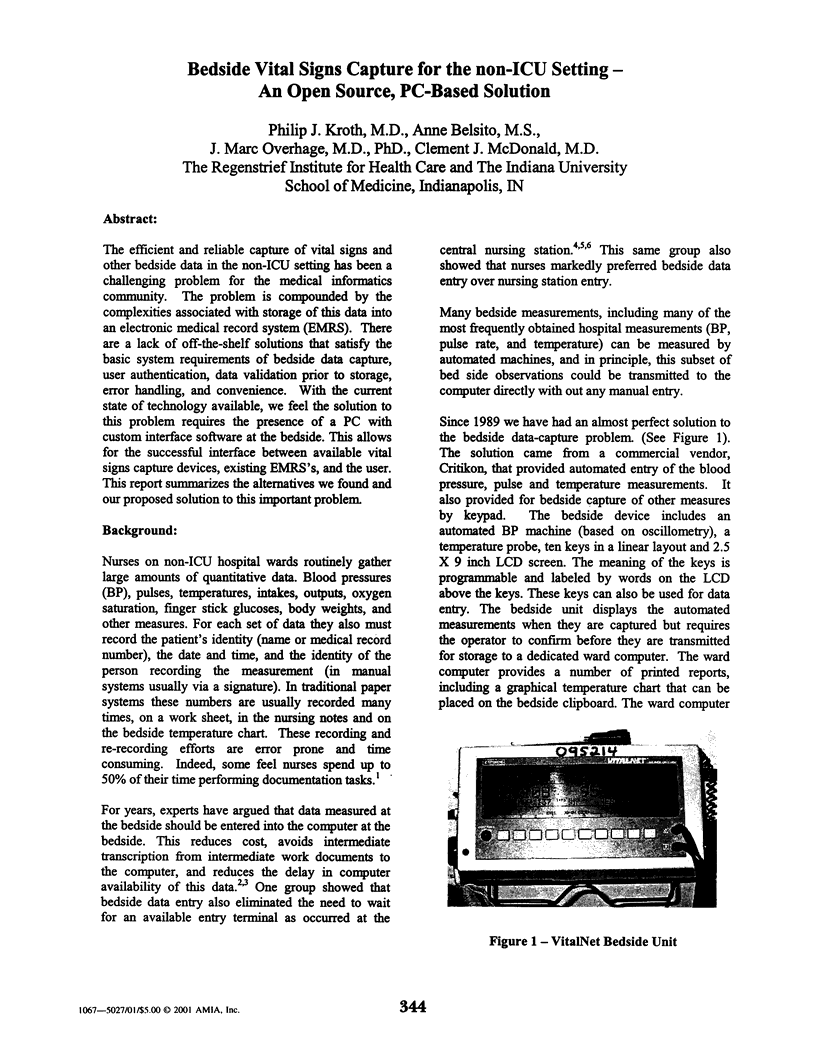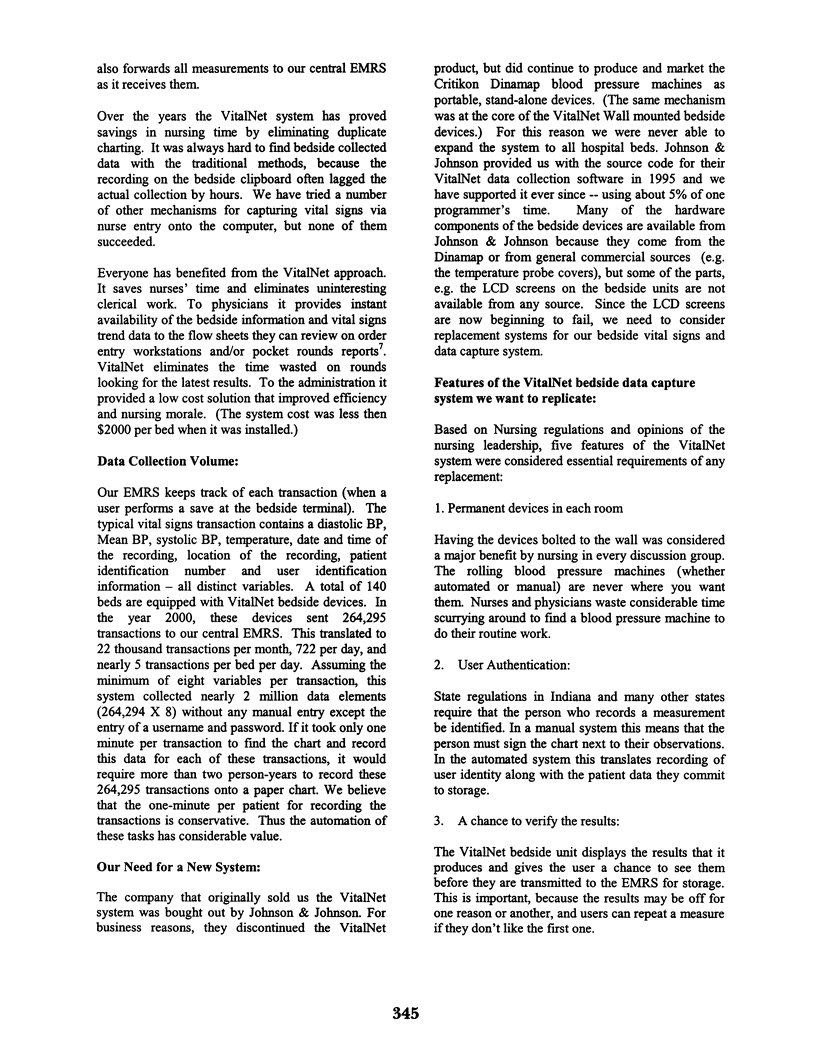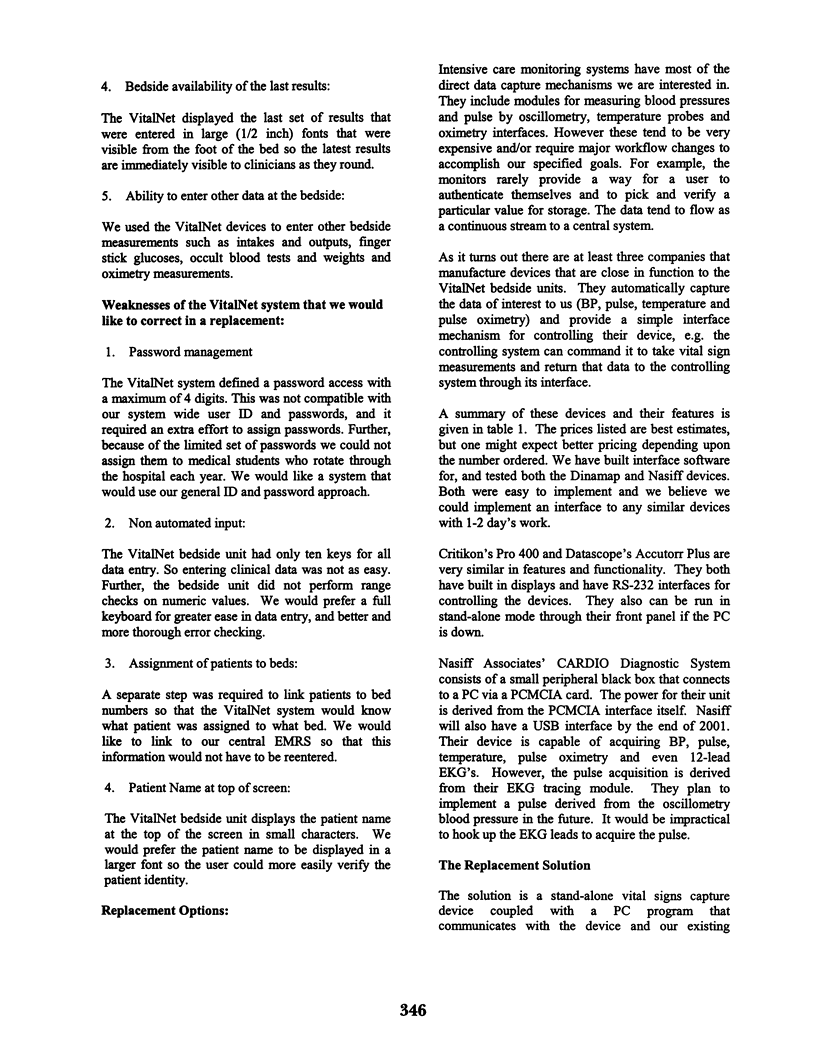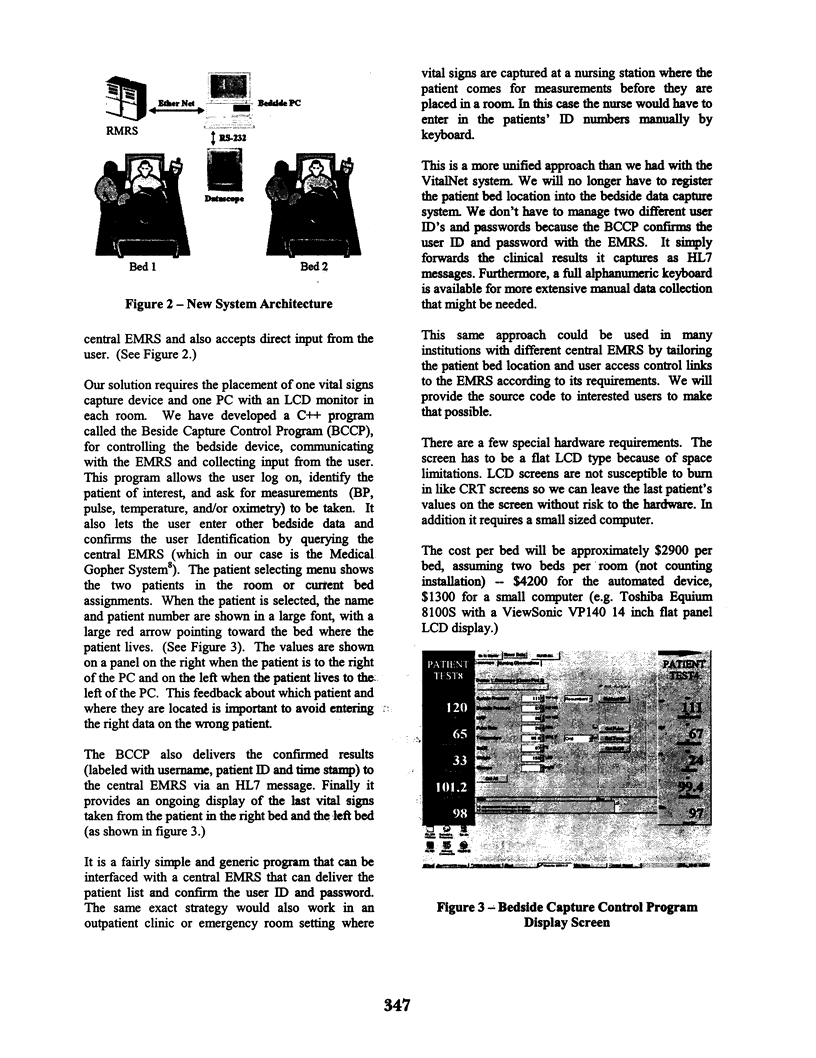Abstract
The efficient and reliable capture of vital signs and other bedside data in the non-ICU setting has been a challenging problem for the medical informatics community. The problem is compounded by the complexities associated with storage of this data into an electronic medical record system (EMRS). There are a lack of off-the-shelf solutions that satisfy the basic system requirements of bedside data capture, user authentication, data validation prior to storage, error handling, and convenience. With the current state of technology available, we feel the solution to this problem requires the presence of a PC with custom interface software at the bedside. This allows for the successful interface between available vital signs capture devices, existing EMRS s, and the user. This report summarizes the alternatives we found and our proposed solution to this important problem.
Full text
PDF




Selected References
These references are in PubMed. This may not be the complete list of references from this article.
- Bowles K. H. The barriers and benefits of nursing information systems. Comput Nurs. 1997 Jul-Aug;15(4):191–198. [PubMed] [Google Scholar]
- McDonald C. J., Tierney W. M. The Medical Gopher--a microcomputer system to help find, organize and decide about patient data. West J Med. 1986 Dec;145(6):823–829. [PMC free article] [PubMed] [Google Scholar]
- Pabst M. K., Scherubel J. C., Minnick A. F. The impact of computerized documentation on nurses' use of time. Comput Nurs. 1996 Jan-Feb;14(1):25–30. [PubMed] [Google Scholar]
- Smith D. S., Rogers S. H., Hood E. R., Phillips D. M. Overtime reduction with the press of a button. An unexpected outcome of computerized documentation. Nurs Case Manag. 1998 Nov-Dec;3(6):266–270. [PubMed] [Google Scholar]


